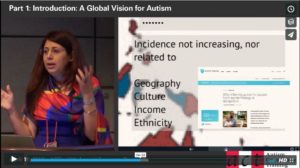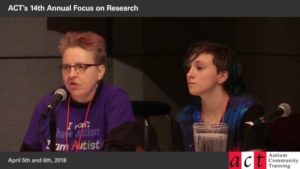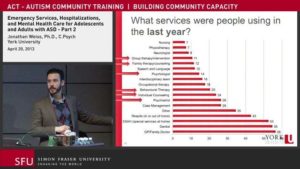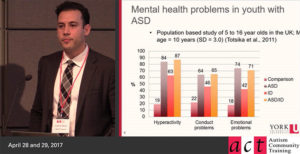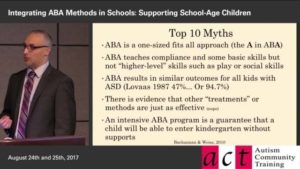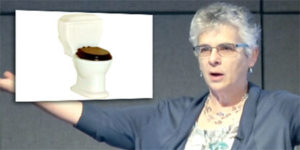Filmed January 2014 – edited into 15 parts; total 221 minutes
Joy Becker uses humour and insight to provide parents, caregivers, and professionals a foundation for teaching individuals with ASD and/or other diverse needs about sexuality and their bodies. It is geared to individuals with age-appropriate language skills and includes information about the sexual development of children, and the information they should understand at various stages of their development. It is designed to address the anxieties caregivers and parents may experience when they discuss sexuality with their children. Education can help children and young adults develop safe relationships and protect them from sexual exploitation, which is more likely to happen if children with diverse needs are not provided information.
About the Presenter
Joy Becker is a nurse educator who draws on many years of experience in educating teenagers with diverse needs. She emphasizes the importance of parents as the primary sexuality educators of their children. In addition to speaking to numerous parent groups, she has delivered courses and workshops to students, teachers, social workers, nurses, and diverse needs individuals of various ages. Ms. Becker has two sons on the autism spectrum and lives in Nanaimo.
Part 1: Introduction and Characteristics of ASD (16:16)
Part 2: Joint Attention, Social Reciprocity, Imitation and Teaching Sexuality (16:42)
Part 3: Knowledge, Attitudes and Skills Needed to Teach Sexuality (20:52)
Part 4: Issues Surrounding Sexuality Education for Individuals with ASD (5:42)
- David Hingsburger blog
- Article: Ring of Safety, by David Hingsburger
- YouTube video: Insights from an Autistic: Masturbation
Part 5: Effective Principles and Approaches for Teaching Sexuality (18:01)
Part 6: Being an Effective Sexuality Educator (4:31)
Part 7: Levels of Learning: Privacy, Hygiene, Body Parts and Functions (19:23)
- BOOK: Taking Care of Myself, by Mary Wrobel
- BOOK: What’s the Big Secret? by Laurie Krasny Brown, Ed.D
- BOOK: Boys, Girls and Body Science, by Meg Hickling
- Google Search: Steps to showering
Part 8: Specific Topics about Sexual Education (14:53)
- BOOK: It’s Perfectly Normal, by Robie Harris
- BOOK: Growing Up – It’s a Girl Thing by Mavis Jukes
- YouTube video: Appropriate Hand Greetings
Part 9: Attitudes and Values, Activity: Taking a Stand (14:53)
Includes values clarification exercise.
Part 10: Teaching Strategies: Visual, Communication and Emotion Management (19:38)
- URL: Autism Research Centre – Faces Test
- Search Google for Emotion Meter examples
Part 11: Teaching Strategies: Public and Private, Modeling, Social Stories (8:58)
Part 12: Visuals: Books and Comic Strip (5:33)
- BOOK: The Care and Keeping of You, by Dr. Cara Natterson
- YouTube video: narration of the Care and Keeping of You
- BOOK: The Feelings Book: the Care and Keeping of Your Emotions
- BOOK: Teach Me Language, by Sabrina Feeman, Ph.D.
Part 13: Visuals: Life Horizon slides, Anatomical Doll, Role Play (27:40)
- URL: Let’s Talk About Touching Program
- SunnyHill Education Resource Centre: Sexual Health Resources
Part 14: Responding to Questions, Collaboration, and Q&A (13:24)
- List of resources compiled by Joy Becker
- Audience question: how to talk to teenager that shuts parent out?

